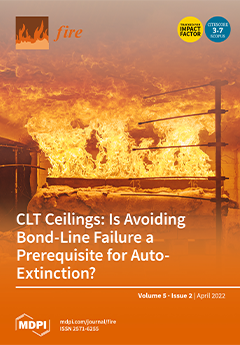Clean gas fire suppressants with high efficiency are widely applied. This paper provides a systematic review of the research advances in the novel environmentally friendly suppressant, C
6F
12O. Considering the principle of screening fire suppressants, the physical and chemical properties
[...] Read more.
Clean gas fire suppressants with high efficiency are widely applied. This paper provides a systematic review of the research advances in the novel environmentally friendly suppressant, C
6F
12O. Considering the principle of screening fire suppressants, the physical and chemical properties of C
6F
12O are presented first. Specifically, research on the measurement of the thermodynamic parameters, toxicity, corrosion, environmental compatibility and dispersion characteristics are summarized, revealing that the poor dispersibility, corrosion of the hydrolysates (perfluoropropionic acid), corrosion and toxicity of thermal breakdown products such as HF and COF
2 and environmentally unfriendly products such as perfluorocarbons should be paid more attention. Three main synthesis routes of C
6F
12O are also introduced in view of its promising prospects for application. Furthermore, the fire extinguishing efficiency of C
6F
12O has been fully investigated in both a laboratory burner scale and full-scale fire extinguishing experiment, the results of which show that the minimum extinguishing volume concentration of C
6F
12O is lower than HFCs, but the mass concentration is much higher. Although C
6F
12O has shown satisfactory fire extinguishing performance in various fire protection scenarios, fire enhancement phenomenon and the large production of HF have been observed during fire extinguishment. Finally, the fire extinguishing mechanism of C
6F
12O has been discussed. The flame suppression effect of C
6F
12O, combustion enhancement phenomenon and the influence of water in the reaction zone have been revealed. This review fully evaluates C
6F
12O, in hope that it will provide a reference for follow-up research and the development of a halon replacement.
Full article





